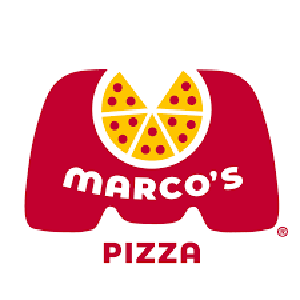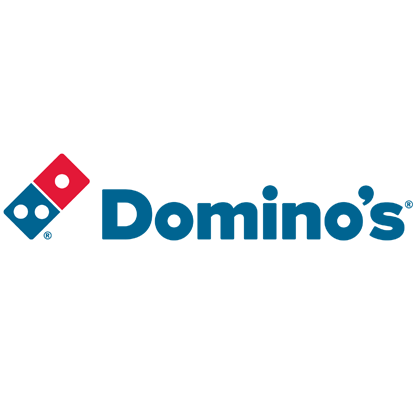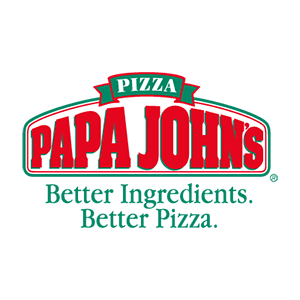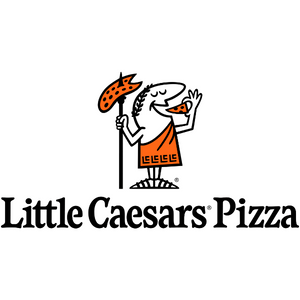Marco’s Pizza Franchise in 2025: Costs, Fee & FDD
Discover why Marco’s Pizza is a standout choice for franchise investment! With over 1,100 locations, authentic Italian flavors, and strong digital sales, this rising pizza star offers a compelling growth opportunity. Learn more about costs, support, and potential returns in our full analysis.
Table of Contents:
Marco’s Pizza is a rising star in the pizza franchise world, founded by Pasquale “Pat” Giammarco in 1978 in Oregon, Ohio. Pat brought authentic Italian flavors to the U.S., blending his love for fresh ingredients with a warm, hospitable atmosphere. The brand’s roots in Italian heritage are evident in every slice, making it a standout choice for pizza lovers across the country. Marco’s Pizza has gained a reputation for quality, with dough made fresh daily, a secret pizza sauce recipe, and premium toppings that appeal to pizza purists and casual diners alike.
Marco’s core product is, of course, its signature pizza, known for its fresh, never-frozen dough and premium toppings. But the menu doesn’t stop there—it also includes subs, salads, cheesy breadsticks, and even desserts. Marco’s attracts a broad customer base, from families looking for a cozy meal to young professionals grabbing a quick bite. The brand serves a mix of dine-in, carryout, and delivery markets, making it versatile and accessible. This multi-channel approach helps Marco’s reach customers wherever they are, whether at home or on the go.
As of today, Marco’s Pizza has grown impressively, with over 1,000 locations across 34 states and 4 countries, including Puerto Rico and the Bahamas. This rapid expansion reflects the brand’s strong appeal and the increasing demand for high-quality pizza. Marco’s Pizza serves millions of customers every day, driven by its commitment to delivering authentic Italian flavors. The franchise’s growth has been bolstered by a loyal customer base and its strategic positioning in both suburban and urban areas.
Marco’s franchisees are supported by a comprehensive system designed for success. This includes a robust training program that covers everything from operational excellence to marketing strategies. New franchisees benefit from hands-on support during the initial setup, and ongoing assistance ensures they remain competitive in their markets. Additionally, Marco’s offers a strong digital presence, with an intuitive online ordering system and app that enhance customer experience. With its commitment to quality and strong franchisee support, Marco’s Pizza presents an enticing opportunity for those looking to enter the pizza business.
Marco’s Pizza Franchise Insights
- Marco’s Pizza is one of the fastest-growing pizza chains in the U.S., with over 1,000 locations across 34 states and international markets like Puerto Rico and the Bahamas, reflecting its strong brand appeal and growth potential.
- The franchise consistently ranks high in customer satisfaction, with its focus on fresh, quality ingredients like never-frozen dough and a secret sauce recipe, contributing to its success in a competitive market.
- Digital sales are a key driver for Marco’s growth, with over 60% of orders coming through online channels, reflecting the brand’s adaptability in a tech-driven market.
- Marco’s Pizza is one of the few national pizza chains founded by a native Italian, which gives it a unique authenticity and story that resonates with customers seeking genuine Italian flavors.
- The brand has been recognized as a top franchise opportunity, earning spots on Entrepreneur’s Franchise 500 list and Franchise Times’ Top 200+, further solidifying its reputation in the industry.
Marco’s Pizza Franchise Key indicators
Growth YOY (%)
6%
vs industry 1%
Total U.S. Franchised Units
1,076
3-Year Failure Rate
6%
vs industry 11%
Sales-to-Investment ratio
1.1:1
How much does it cost to open a Marco’s Pizza franchise?
Understanding the potential investment size and capital requirements is crucial when considering opening a Marco’s Pizza franchise. These financial commitments, including initial franchise fees, equipment costs, and ongoing operational expenses, impact the feasibility and profitability of the venture. Thoroughly evaluating these factors ensures that potential franchisees are prepared for the financial responsibilities and can make informed decisions about their ability to sustain and grow the business, ultimately contributing to long-term success.
Min & Max Investment
Opening a Marco’s Pizza franchise involves several key costs, which are outlined in Item 7 of the Franchise Disclosure Document (FDD). You can see a breakdown of the costs to open a Marco’s Pizza below from the most recent Item 7 below:
| Type of Expenditure | Minimum Investment | Maximum Investment |
|---|---|---|
| Initial Franchise Fee | $25,000 | $25,000 |
| Real Property | $6,000 | $18,666 |
| Equipment, Fixtures | $97,725 | $175,000 |
| Point of Sale Computers | $19,000 | $21,000 |
| Credit Card Processing | $6,604 | $6,604 |
| Leasehold Improvements | $65,000 | $400,000 |
| Signage | $3,000 | $15,000 |
| Opening Inventory | $7,000 | $11,000 |
| Small Supplies | $14,200 | $18,500 |
| Deposits, Pre-Paid Expenses | $2,500 | $6,000 |
| Business Licenses | $500 | $3,000 |
| Insurance | $2,366 | $16,500 |
| Training Expenses | $1,500 | $8,650 |
| Miscellaneous Expenses | $500 | $5,000 |
| Architectural and Engineering | $8,000 | $15,000 |
| Technology Fee | $336 | $336 |
| Delivery Area, Streets Database | $500 | $500 |
| Brand Launch Program | $15,500 | $25,500 |
| Store Technology Infrastructure System | $800 | $2,400 |
| Menu Boards | $600 | $1,200 |
| Additional Funds (3 months) | $9,000 | $30,000 |
| Total | $285,631 | $804,856 |
Item 7 in the Franchise Disclosure Document (FDD) is the “Estimated Initial Investment” section. It outlines the total costs a franchisee can expect to incur when starting a franchise, including the initial franchise fee, equipment, inventory, real estate, and other startup expenses. This section is crucial because it provides potential franchisees with a detailed understanding of the financial commitment required, helping them assess affordability and plan their investment strategy effectively.
Required Capital
When considering opening a Marco’s Pizza or a similar franchise in the pizza industry, understanding the financial requirements is essential. While exact figures can vary depending on the franchise, here’s an overview of the typical capital, liquid assets, and net worth requirements:
- Initial Capital Investment To open a Marco’s Pizza, the total investment typically ranges from $286,000 to $805,000. This includes expenses such as real estate, equipment, build-out costs, and initial inventory. Assuming that you will finance your franchise investment, you should plan to have 20% of the total investment amount in the form of equity (cash) for the investment.
- Liquid Assets Requirement Marco’s Pizza and similar franchises generally require potential franchisees to have liquid assets (cash or assets easily convertible to cash) in the range of $100,000 to $250,000. This ensures you have enough working capital to cover initial operating expenses before the business becomes profitable.
- Net Worth Requirement For Marco’s and comparable franchises, a minimum net worth of around $400,000 to $800,000 is often required. This reflects your overall financial stability and ability to manage the investment, including any unexpected costs.
How much does a Marco’s Pizza franchise owner make?
Calculating the salary of a Marco’s Pizza franchise owner involves analyzing gross sales to determine total revenue, assessing operational efficiency to understand profit margins, and accounting for franchisor fees and additional expenses such as rent, utilities, and payroll. Effective management of these factors can significantly impact the profitability and financial success of a Marco’s Pizza franchise owner. This comprehensive financial analysis helps estimate net profits, from which the owner’s salary can be derived. A clear understanding of these factors ensures accurate salary projections and financial planning for sustainable business operations.
Marco’s Pizza Revenue & Gross Sales
Marco’s Pizza has shown strong revenue performance recently, with median gross sales reaching $895,553. This figure reflects the robust demand for its high-quality, authentic Italian-style pizzas. The consistent growth in sales across its franchise locations highlights the brand’s strong market presence and appeal.
Which key factors impact the average revenue performance of Marco’s Pizza franchisees?
Several factors have likely contributed to the strong performance of U.S. franchisee median gross sales for Marco’s Pizza. The brand’s commitment to using high-quality, fresh ingredients, such as never-frozen dough and premium toppings, appeals to customers seeking authentic Italian flavors. Additionally, Marco’s emphasis on a versatile menu and strong digital presence has enabled it to capture both dine-in and delivery markets effectively. The franchise’s focus on strategic locations, coupled with robust support and training programs, ensures that franchisees are well-equipped to operate efficiently and maximize profitability. Furthermore, the brand’s ability to adapt to changing consumer preferences, particularly in the rise of online and mobile ordering, has positioned it well for sustained growth.
Marco’s Pizza Franchise Operational Costs
When opening a Marco’s Pizza franchise, it’s crucial to understand the primary ongoing operational costs that will impact your business. These costs are essential to running day-to-day operations efficiently and maintaining the quality that customers expect from the brand.
- Labor Costs Paying your staff, including wages, benefits, and payroll taxes, is a significant ongoing expense. Proper staffing levels are essential to ensure smooth operations.
- Food and Supply Costs Purchasing fresh ingredients and supplies to maintain product quality will be a constant expense. Managing inventory and minimizing waste are key to controlling these costs.
- Rent and Utilities The cost of leasing your location and covering utilities like electricity, gas, and water will be a regular financial commitment.
- Marketing and Promotions Local marketing efforts, including promotions and community outreach, are necessary to drive traffic and build brand awareness in your area.
Keeping a close eye on these operational costs will help ensure the profitability and success of your Marco’s Pizza franchise.
Marco’s Pizza Franchise Fees
When considering a Marco’s Pizza franchise, it’s important to account for various ongoing fees that will impact your financial planning and overall profitability. These fees are standard in the franchise agreement and ensure that you benefit from the brand’s established reputation and ongoing support.
- Royalty Fee You’ll be required to pay a royalty fee of 5.5% of your Net Royalty Sales on a weekly basis. This fee could increase up to 6.0%, depending on certain conditions. The royalty fee is essential for maintaining the franchise system, covering everything from brand upkeep to ongoing support and resources provided by the franchisor.
- Brand Development Fund Currently set at 1% of your Net Royalty Sales, this fee contributes to the brand’s marketing and development efforts at the national level. The franchisor reserves the right to increase this fee by 0.5% with 90 days’ prior written notice, ensuring that the brand remains competitive and continues to attract customers.
- Additional Fees There are additional fees for training programs, technology, and other items provided by Marco’s Pizza that may be applied.
Understanding and planning for these fees is essential for managing the financial aspects of your Marco’s Pizza franchise, allowing you to focus on growing your business within the established framework of a successful brand.
Marco’s Pizza Franchise Earnings
The earnings of a Marco’s Pizza franchise owner can vary based on factors such as location, sales volume, and how efficiently the business is managed. However, for owner-operators who are actively involved in daily operations, the potential for profitability is strong. With median gross sales of approximately $895,553, a well-managed Marco’s Pizza location can generate significant revenue.
For owner-operators, the estimated earnings are around $134,000, reflecting a 15% operating profit margin. This figure underscores the financial benefits of hands-on management, where the franchisee can directly influence operational efficiency and customer service. With the right focus on cost management and maintaining high sales volume, Marco’s Pizza franchisees have the potential to achieve solid earnings and a healthy return on investment.
How to Open a Marco’s Pizza Franchise
Becoming a Marco’s Pizza franchisee involves a structured process that guides you from the initial inquiry to the grand opening of your restaurant. This process ensures that both the franchisor and the franchisee are aligned and prepared for success.
- Initial Inquiry You or your franchise specialist submits an initial inquiry basic information about your interest and background. You should also conduct thorough research on the franchise, including seeing all of the information available on the Vetted Biz franchise intelligence platform, including access to the most recent Franchise Disclosure Document (FDD).
- Initial Discussion and Pre-Qualification After your inquiry, you will participate in an initial discussion with a franchise representative. They will review your background, financial qualifications, and overall interest in the franchise to determine if you meet the basic requirements.
- Discovery Day You’ll be invited to attend a Discovery Day, typically held at Marco’s headquarters. This event gives you the opportunity to meet key team members, ask questions, and get a deeper understanding of the franchise operations and culture.
- Franchise Agreement Signing After completing due diligence and deciding to move forward, you will sign the franchise agreement. This legally binding contract formalizes your commitment and secures your franchise rights.
- Site Selection and Lease Negotiation With the help of Marco’s real estate team, you will select a suitable location for your restaurant. They will assist with lease negotiations to ensure favorable terms.
- Training and Preparation You will undergo an extensive training program, including both classroom and hands-on training, to equip you with the knowledge needed to run your Marco’s Pizza franchise successfully.
- Build-Out and Pre-Opening Once your location is secured, the build-out phase begins. This includes constructing and outfitting your restaurant according to brand standards, while simultaneously setting up marketing and operational plans.
- Grand Opening After final inspections and receiving necessary permits, your Marco’s Pizza location is ready for its grand opening. With support from the franchisor, you’ll launch your business and begin serving customers.
Pros & Cons
Pros
Strong Brand with Proven Success: Marco’s Pizza has established itself as a popular and growing brand, known for high-quality, authentic pizza. With over 1,100 locations, its proven business model provides confidence for new franchisees.
Appealing Product Offering: The focus on fresh ingredients and authentic Italian flavors appeals to a broad customer base, including families, students, and pizza enthusiasts, ensuring steady demand.
Growing Digital Presence: The brand’s investment in technology and digital ordering platforms makes it easier for franchisees to capture the growing demand for online and mobile orders, which is crucial in today’s market.
Cons
Competitive Market: The pizza industry is highly competitive, with numerous established brands. Standing out and maintaining profitability may require strong marketing efforts and differentiation.
Labor Management Challenges: Like many in the restaurant industry, managing labor costs and staffing can be a challenge, especially with fluctuating demand and economic conditions.
Operational Complexity: Running a pizza franchise involves juggling multiple tasks, including ingredient sourcing, delivery logistics, and maintaining consistent quality. For new franchisees, this can be challenging to manage efficiently, especially without prior experience in the food service industry.






